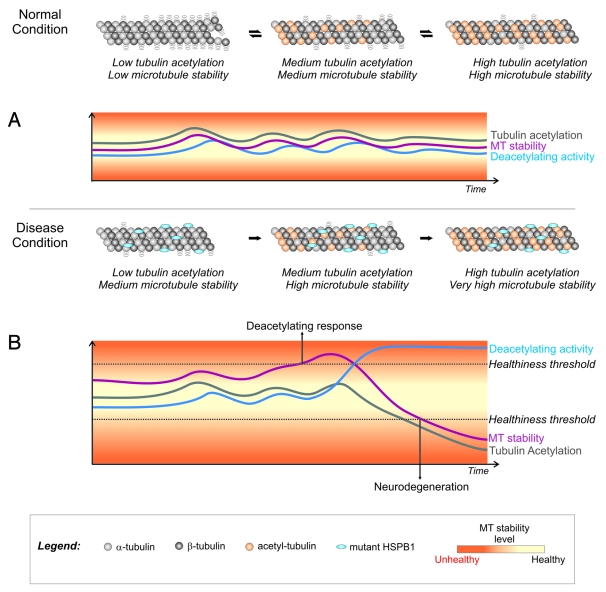Figure 1. Model for the role of tubulin acetylation in the stability of the neuronal microtubule network under normal and disease conditions (*). (A) Under normal conditions, there is a correlation between tubulin acetylation levels and microtubule stability. Acetylating and deacetylating enzymes are able to control acetylation levels and maintain microtubule stability at healthy levels. (B) In the presence of the microtubule-stabilizing CMT-causing HSPB1 mutants, tubulin acetylation levels do not reflect the degree of stability of the microtubule network. An increase in microtubule stability would eventually trigger a cellular deacetylating response as an attempt to restore normal stability levels. Due to the discrepancy between acetylation and microtubule stability levels, this cellular response results in an excessive loss of acetylation that reduces integrity of the microtubule network, impairs axonal transport and causes neurodegeneration. *To simplify the model we highlighted only the tubulin acetylation levels in the figure. We recognize that a complete model for microtubule stability control must also include the role of MAPs and other post-translational modifications.

An official website of the United States government
Here's how you know
Official websites use .gov
A
.gov website belongs to an official
government organization in the United States.
Secure .gov websites use HTTPS
A lock (
) or https:// means you've safely
connected to the .gov website. Share sensitive
information only on official, secure websites.
